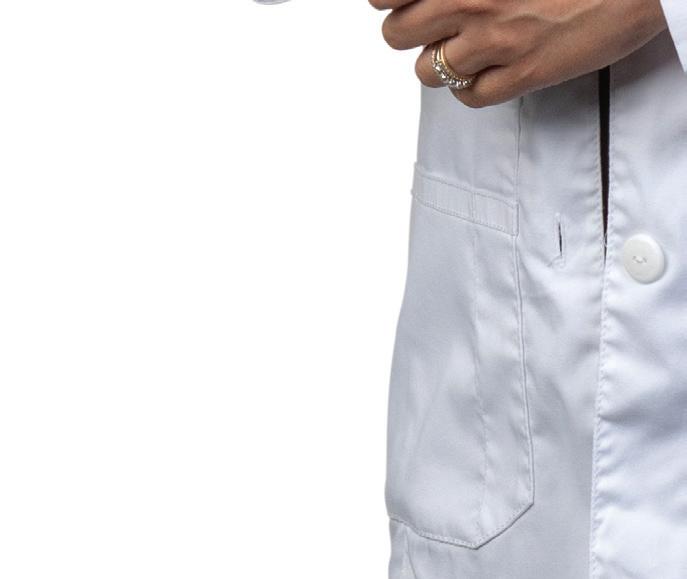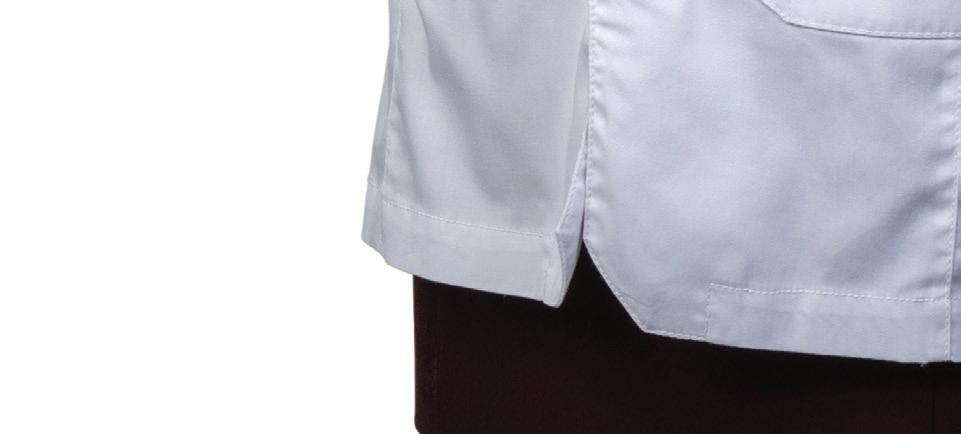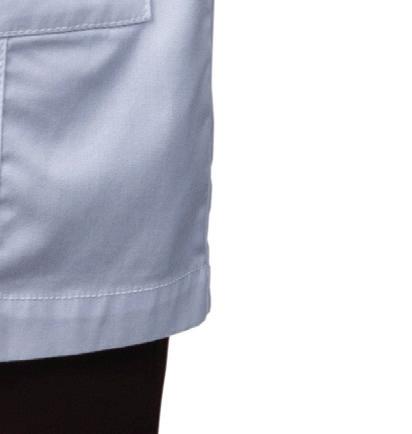Update of the week page 5
The completion of the Apison Pike Bridge

Update of the week page 5
The completion of the Apison Pike Bridge
Pressing Issue page 3
Southern’s Trails Marked by Tragedy
The Student Voice Since 1926
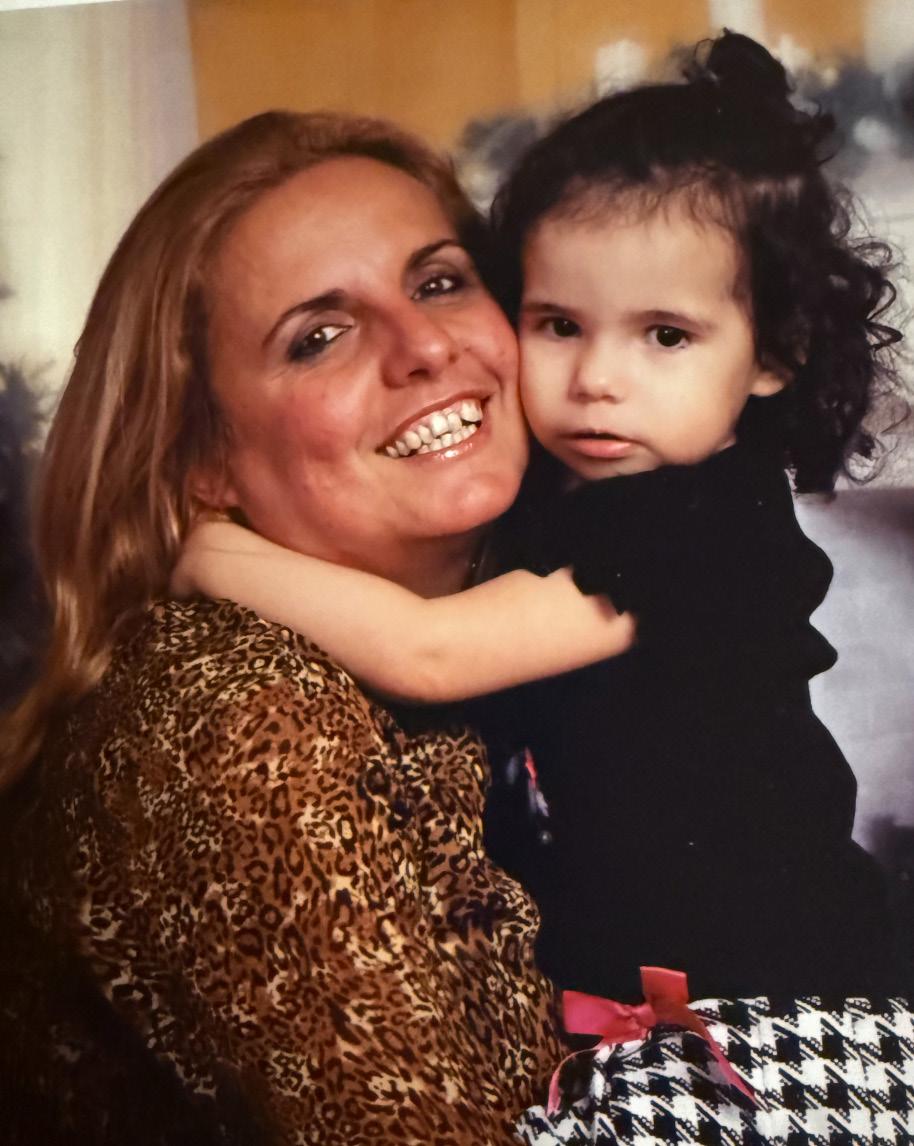
Kyla Wetmore Reporter
Ruthie Roque, a junior business administration major, sat in front of dozens of Polaroid images featuring participants in this year’s Latin American Cultural (LAC) Night, which will begin Saturday at 9 p.m. in Iles Physical Education Center.
As director and sole scriptwriter for LAC Night, Roque flipped through the pictures as she spoke about how the importance of memories played a significant role in the creation and theme of the event.
“The purpose of these photos is
actually tied to the message,” Roque explained during a recent interview.
“When I was making the story, I knew that I wanted to incorporate memories and the power of photos—and what that means for us as people who so often forget until we see a picture.”
For inspiration, Roque pulled from her personal history as the daughter of Cuban immigrants. She shared that the story of how her mother, Barbara Roque, immigrated to the United States impacted her deeply while growing up.
As a young Cuban woman in 1995, Barbara had heard about the opportunity to immigrate to America while working at a government facility called La Casa de Cultura, or “The House of
Culture,” according to her daughter. At the time, the Clinton administration was offering only a few thousand visas to Cuban citizens, and Barbara Roque immediately knew she wanted to apply.
“I didn’t want to live there without freedom of expression and with so many shortages that not even money could fix,” she stated in an email to the Accent that was translated from Spanish to English. Because applicants submitted their paperwork at La Casa de Cultura, Barbara Roque as an employee could have been fired or banned from ever securing a visa if she had applied there for her papers. So, according to Roque, her
See Ruthie Roque on page 2
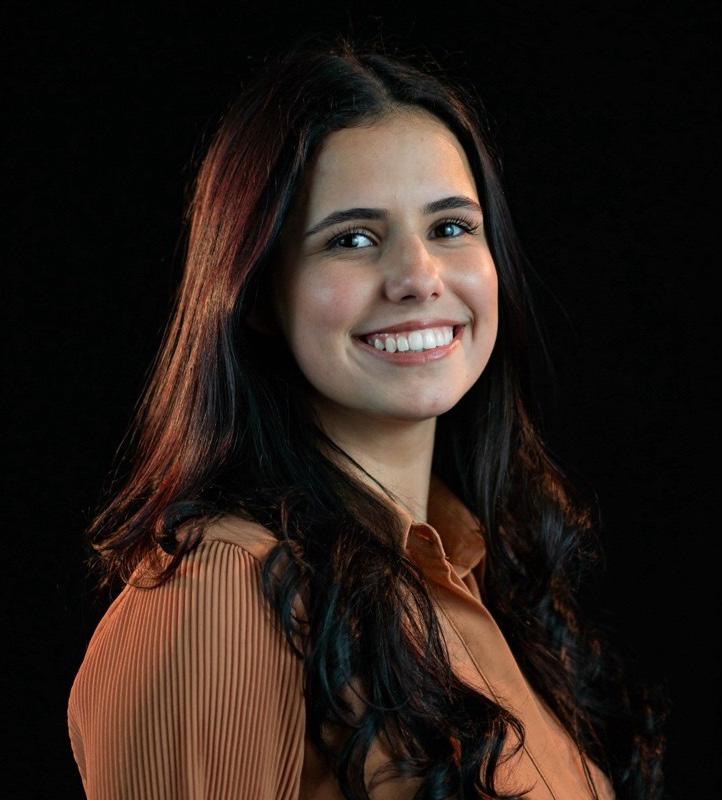
“She was happy because at the end of the day, this was the destination. I was the dream that she achieved." - Ruthie Roque
Chloe Smith News Editor
Most people walk through Southern’s campus without thinking twice about what lies beneath their feet, but one man has taken a closer look at what has been left behind.
With a metal detector and a love for discovery, Len Raney has been unearthing pieces of the school’s past one beep at a time.
Raney, who works for Southern’s Plant Services and has lived in Collegedale for 22 years, has been metal detecting since his childhood. In the past two years, his discoveries have expanded to Southern’s campus.
“I’ve been all over campus,” he said.
His journey began near one of the university’s oldest landmarks, known as the Doll House.
“I practiced there because I’ve been told that McKees and
continued from page 1
mother had to drive to another town to apply.
Eventually, Barbara received a letter, and the first thing she saw was a stamp with the American flag. Roque remembers her mother telling her the piece of postage was the first thing she owned with the U.S. flag on it.
She tearfully described her mother’s reaction to the letter.
“She said she shook; she fainted,” Roque said. “She didn’t believe what it was. She didn’t believe she deserved it or that she would have the chance.”
While Barbara described the opportunity to come to America as a “miracle,” Roque reflected on the many sacrifices her mother made to be here.
“She came alone. She had no idea how to speak English. That alone is super scary,” she said. “It’s an uncomfortable feeling to be somewhere new and to have to get used to a new culture that almost doesn’t even want you there, you know. So that is the sacrifice. It’s the loss.”
After immigrating to the United States, Barbara Roque settled in Miami and began working at a manufacturing factory. She began dating the owner, Moises Roque, and they married in 1998. Six years later, Roque was born, and she remains the couple’s only child.
While raising her daughter, Barbara answered many questions Roque asked about why she left Cuba.
“She has always been impressed by my decision not to have children in Cuba, so they wouldn’t suffer what I suffered,” Barbara explained in her email.
Roque recalled that growing up, her mother was never upset or sad when recalling her experiences.
“She was happy because at the end of the day, this was the destination,” Roque said. “I was
Southern people have inundated this whole campus so many times with metal detectors,” he said.
Despite doubts from some, Raney said there are still items to be found for those who pace themselves.
“When I go out and take my time, [I] will find things,” he said.
For Raney, metal detecting is more than a pastime—it is an adventure filled with surprises.
Over the years, he has discovered items ranging from vintage coins to old railroad items.
“I found a few 50 cent silvers, some [from the] 1940s and 50s,” he said. “Many quarters were found, [and] padlocks to old mail bags they used to carry on trains. And some lead seals that they would seal things with and put them on trains to transport.”
According to Raney, every dig is like opening a mystery box.
“It’s like a cracker jack box surprise you might dig out,” he
the dream that she achieved."
According to Roque, the recognition of past generations’ sacrifices helped inspire the message behind LAC Night. She said the messaging at previous events focused on self-identity, but this year, she wants to bring a new conversation to LAC Night.
“To me, this is a love letter to the generations before us, saying, ‘Thank you for doing something that would have never crossed my mind,’” she explained.
That message is very personal to Roque, and she wants it to be meaningful to everyone involved. One way she worked to achieve this was by not naming the characters as she wrote the script.
“When I was choosing the actors, I told them, ‘Pick a name [of someone] in your family that you want to pay tribute
said. “It’s just wondering what you’re going to dig up next.”
When detecting, Raney said that he uses a programmable metal detector that utilizes a number system to read different types of metals.
“It depends on what you’re looking for, but it’s very difficult to program this one,” he said. Raney explained that he tries to remain respectful and transparent when digging on Southern’s campus. To avoid damage, he said he digs in a cone shape when the ground is wet.
“I talked to grounds department about the whole thing and how I was doing it,” he said.
In addition to respecting the grounds, Raney said Campus Safety is aware of his activities.
“People have called and turned me in I guess,” said Raney. “They say, ‘Somebody’s out there digging.’ But now [Campus Safety] just tells them,
to, and that will be your name that you will have in the story,” Roque said. “It’s been really hard for them, because I am putting them in that position [of] like, ‘This is a tribute to Lucio, or this is a tribute to Isabel. What do you want to say to Isabel?’”
Heidy Medina, a sophomore nursing major, is acting as a main character for LAC Night and named her character after her mother.
“It kind of just shows the characters and embodies like this really strong, determined woman,” she said. “I feel like what my mom has shown me has directed me to be [who I am] my whole life—to be someone strong [and] determined— and she has also encouraged me a lot to do things for myself, no matter how, no matter the circumstances or what anybody else might feel.”
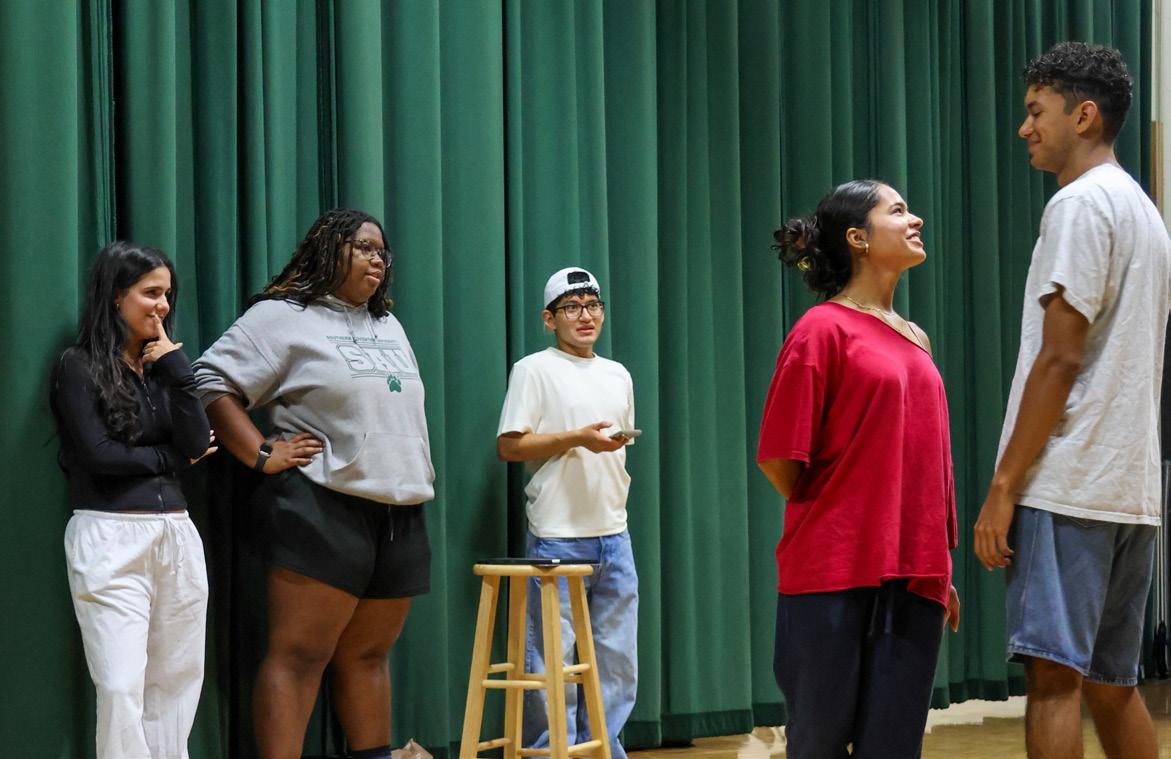

The Accent encourages readers to write articles and voice their opinions. However, the views expressed do not necessarily reflect the opinions of the Accent, the Southern Adventist University or the Seventh-day Adventist Church.
For any questions, comments and article submission information, email the editor at haydenjkobza@southern.edu.
For all advertising inquiries, email alvajohnson@southern.edu.
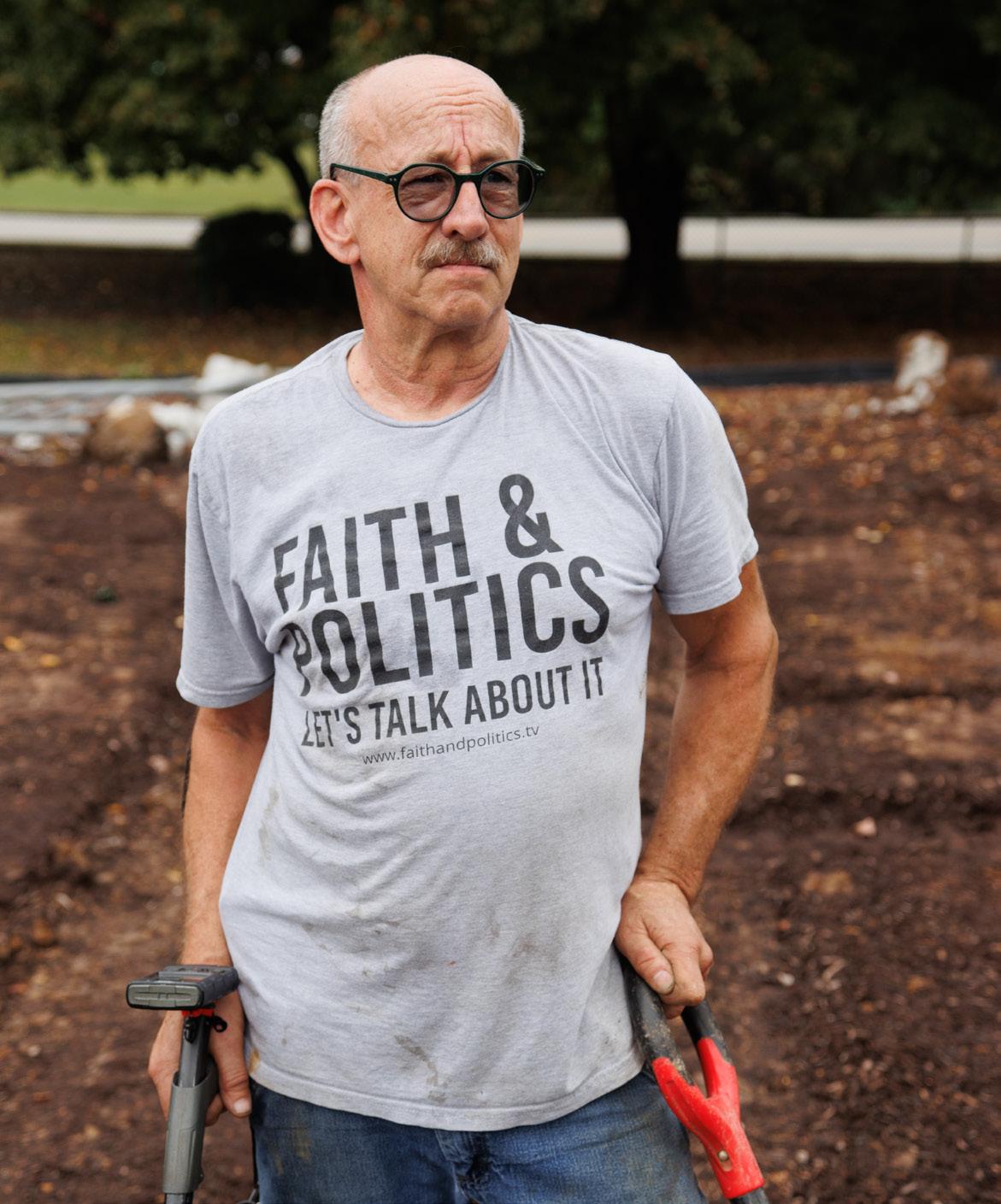
Medina said she has enjoyed working with Roque because of how she cares about actors personally, the time and effort she has put into the night and the creative direction she advocates for.
“She has a very creative mind,” Medina explained. “Like, it’s crazy how she was able to put stories together.”
Roque’s best friend, Macana Suvichai, remembers going on a drive with Roque the day that Bad Bunny, a Puerto Rican singer and songwriter, released his album DeBÍ TiRAR MáS FOToS, or “I Should Have Taken More Photos” in English. While they drove, Roque shared all of her ideas for LAC Night before she reached out to the club’s officers.
“She had a really beautiful story,” Suvichai said. “Now I’m getting to see her be crazy busy, and she’s been doing
things like filming and some things that I would never think that she would have done, but it’s been really cool to see it all [take shape].”
Paola Vasquez has been friends with Roque since they were freshmen at North Dallas Adventist Academy, where Roque served as Student Association president their senior year. She believes Roque will be successful as LAC director because of her ability to see the best in people, to effectively communicate with others and to have a clear vision and goals.
LAC Acting Assistant Manager Lauren Mason said Roque has a strong vision and knows exactly what she wants. Mason encourages everyone to attend LAC this weekend.
“I would just say 100% you don’t want to miss it,” she said. “The script is amazing.”
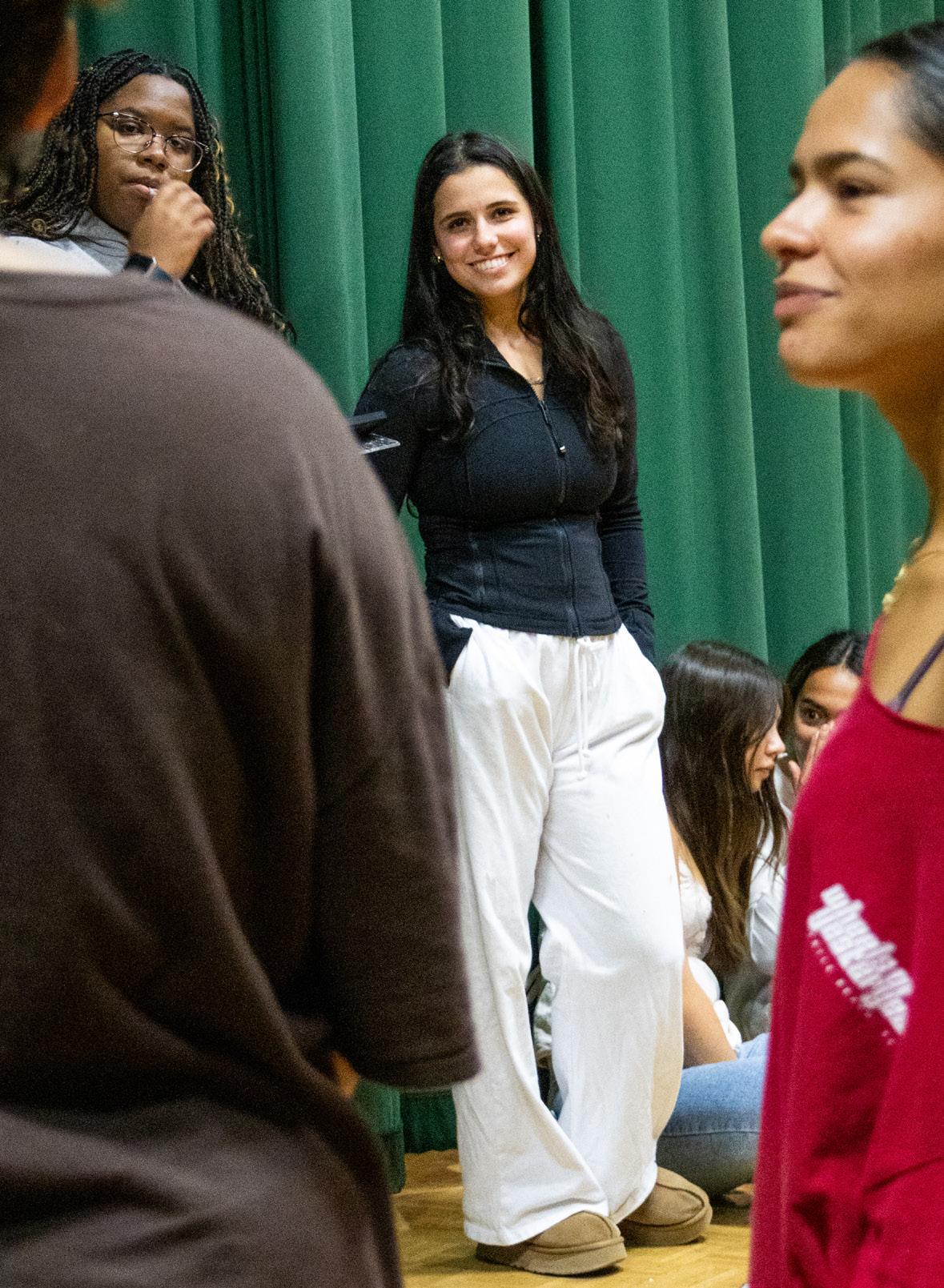
Lily Mutai Contributor
A deceased individual was discovered near Southern Adventist University’s wilderness system, prompting concern among students, particularly those in the biology department who often use the paths for research and recreation.
Jamie Heath, assistant chief of the Collegedale Police Department, said the discovery, made on Sept. 12, is still under investigation. The police department was unable to offer any further comments.
According to the university, the individual was not a student or faculty member, and there was no evidence of a threat to the campus.
On Friday, Sept. 19, during an evening vespers service, Associate Chaplain Anna Bennet announced the discovery to the student body. Many students reacted with shock, and gasps echoed throughout the congregation.
Winding through the forests behind campus, the Southern trails are rarely empty. Students and community members use them for hiking and recreation.
The biology department depends on the trails for practicing their studies.
Keith Synder, chair of the biology department, explained the close relationship of the biology department and the trails in an email to the Accent.
“We use them for research on the animals and plants,” Snyder
stated. “This includes classes such as Medicinal Plants, Entomology, Ornithology, Genetics and several research projects.”
Heaven Robles, a junior biology research major, has conducted research on the trails and volunteered to help clear the area for Martin Luther King service day.
“The biology trails to a degree are a sense of pride,” Robles said. “A lot of us research students actually have a few projects where we collect data through the trail paths.”
Since the deceased individual was found, biology students have had conflicting feelings about the safety of the trails.
Robles said that the event is still on her mind and has put her and her peers in a state of unease. As a result, she has changed her trail-treading routine.
“Now, in case I need a walk, I’ll ask my roommate to join, or we will leave in groups,” Robles said.
Nadia Cortes, a sophomore biomedical major, said her fears diminished after students received a campus-wide email from Dennis Negron, vice president for student development, on behalf of Southern’s president, Ken Shaw. The email stated that there was no threat to campus. However, similar to Robles, Cortes remains cautious.
“I definitely would not go to the trails by myself, as I am not completely sure what hap-
pened and what was found on the trails,” said Cortes.
According to Cortes, the university has provided support tools to help students cope with the event.
“They provided counselors for people to talk with after vespers when the death was announced,” explained Cortes.
In an email from Negron to the campus, he urged other students to reach out to the residence hall dean if they needed someone to talk to.
Amy Ortiz-Moretta, director of Student Support Services,
said Southern offers several free mental health resources, including Uwill teletherapy, the TalkCampus peer support app and on-campus counseling in Bietz Center. She encouraged students to reach out for help, noting that support is available 24/7.
Looking forward, Cortes predicts an impact on learning, specifically on research and events that will take place on the trails.
“Death is unsettling, and it may lead to differences in how we approach the trails and
outdoor learning,” said Cortes.
“We may seek to be safer and encourage group learning.”
Despite the tragedy, students say the trails remain a place of peace and connection.
“These paths provide a sense of comfort and silence with nature that provides a reset after a long set of exams, a busy day or just a moment to hear God’s voice,” Robles said. “Throughout my college experience, taking a small walk is my favorite study break, and the biology trails provide that reset some of us desperately need.”

Madelynn Brower Contributor
From Nov. 23-30, Southern’s Soulwinning and Leadership Training program (SALT) and the Evangelistic Resource Center (ERC) will be taking over 90 students on a mission trip to the Dominican Republic. According to Pastor Douglas Na’a, director of SALT, this trip will be their largest ever planned.
The trip is one of several joint ventures SALT and ERC have taken. This year, the students will be split into two groups traveling to Santo Domingo, Dominican Republic, where they will go to separate locations. They plan to visit up to 90 different churches in 10 days to preach, hold evangelistic meetings and conduct baptisms.
To prepare for trips like this, SALT students take practicum classes every Tuesday and Thursday, where they learn how to write sermons and
practice before an audience.
This year, there are 70 SALT students going on the mission trip. They will conduct sermons and evangelism series starting the Saturday after they arrive in the Dominican Republic and continuing every night throughout the following week.
Na’a explained that SALT goes to the same location every year, which helps to build relationships with local conferences and communities and gives them a better understanding of how to evangelize in the local area.
“We’re very intentional about the Dominican Republic" said Na’a. “We want to go to one place because this is going to be something continuous for us, [and] we really want to make a major impact.”
According to Alex Castillejos, the ERC office manager, the mission trip starts weeks before when ERC recruits students to an evangelism boot camp,
teaching them how to preach and give Bible studies before they are sent out on missions. Unlike SALT programs, ERC students don’t attend classes to learn how to write and preach sermons. Instead, they are offered several weeks of training to prepare for the trip.
Castillejos also said that ERC has a program in place to train local church members in conferences around the world on evangelism. The student missionaries hold five-day workshops to teach people in the conference how to be Bible workers and conduct Bible studies in their neighborhoods.
When the students complete the workshop, the participants conduct required Bible studies of their own with people in the community for the next three months.
According to Castillejos, the organization has also worked with Southern’s nursing department to provide medical care
on mission trips in the past.
“Every summer we go to one country, and we do one week evangelism and one week medical, and we partner with the nursing department,” he said. “We see 800 patients.” He added that ERC has been doing these kinds of mission trips for the last three years.
According to Na’a, the primary focus of both ERC and SALT is the same: missions.
“The long term for us is having students won over to evangelism,” said Na’a. “They get to see and experience the power of God working in and through them. Evangelism is caught, not taught.”
Both groups have stated that there are other locations they would like to reach in the future, as well as new programs they would like to offer their students.
“ERC is focusing this year on the certification for Bible worker,” said Castillejos. “Maybe next
year we will work on the Public Evangelism Certification.” This certification helps to foster positive relations between student missionaries and local law enforcement but is not yet available for students.
While SALT trips focus on community outreach, they are also impactful for students who participate.
Karise Francis, a sophomore elementary education major and SALT mentor for the trip, emphasized her desire for students to see the impact they are making.
“I want to see the SALT students experience what it's like to see people make a decision for Christ because of their faithfulness,” she said. “I’m looking forward to seeing how SALT and the whole mission trip group really bond.”

continued from page 2
‘Well that’s probably just Len.’”
In an email to the Accent, Shawn Haas, associate director of Campus Safety, shared the department’s thoughts.
“It is our understanding that he is approved to do this on campus,” the email read. “It is feasible that someone has called this in, in the past, however we would not generate a report unless it was something unauthorized.”
According to Raney, when he discovers items related to Southern’s history, he turns them in to Alumni Relations.
“When I first started doing it here, I made it a point to take anything that is related or belonged to Southern to alumni,” he said.
Cheryl Torres, director of Alumni Relations, described her experience with Raney and his discoveries.
“Len Raney came to my office one day with an old Southern commemorative medal he’d found with his metal detector,” she stated. “Anytime he finds a little piece of Southern’s history, he brings it to the Alumni Relations office. He’s also brought a token for a quart of milk from the College Dairy that used to be one of Southern’s industries.”
According to Torres, Raney is not the only one who has sent items to Alumni Relations.
“Often, alumni and others who are connected to Southern will bring or send us items from
Southern’s past- marketing materials, swag, diaries, and more- and it’s always interesting to see these tiny glimpses of what life was like for the students who came before us,” Torres stated. Recently, a playground behind the old Collegedale Academy elementary school was in the process of being torn down. Raney took this as an opportunity to look for items that may have been left behind.
“I figured since they were digging up and getting ready to remodel the whole place, it’s a good place to metal detect,” he said. “So far, it’s been pretty good. I got a couple of foreign coins, [and] I found a silver coin.”
Raney explained that he sometimes goes metal detecting with others.
“I just love that there’s a lot of people [and there are] a lot of clubs around here that do it,” he said. “Sometimes we get together with 20 or 30 people and go out and get permission to do a real Civil War site or something.”
Raney also said that he doesn’t mind curious onlookers, especially Southern students.
“There’s been a few students,” he said. “I’m game for them coming up and asking me some questions about what I found. I’m glad to tell them it’s not like what [they] think, like on TV or magazines.”
Karis McConnell, senior archaeology and classical studies major, shared her perspective on Raney’s activities.
“I’m sure the thrill of the hunt, especially so close to our cultural identity as Adventists, can give the common treasure hunter a glimpse into the world of archaeology,” McConnell stated.
Houston Beckworth, a junior archaeology and biblical studies major, also provided insight.
“It is cool to see history being uncovered on Southern’s campus,” said Beckworth. “It is a difficulty to find the past when the past is constantly being covered up.”
Though most of his finds are small treasures, Raney occasionally comes across items that spark excitement, including a recent discovery.
“I found an 1864 [coin],” said Raney. “It said ‘Confederate States of America’ on a 50-cent piece. That blew my mind. I found out there were only two made.”
Despite this excitement, his discovery was not what he expected.
“Then I had to take it in,” he said. “You’ve got to pay anywhere from $20 to $300 to have it looked at, and it turned out to be a fake. They were so valuable that people were making fake ones.”
Raney said his unusual discoveries continue to grow.
“I found an old homemade pair of shoes [and] an old handmade cowbell,” he said.
“I found the whistles that you see in those movies in England where the cops have them around their neck. It was in
really good shape.”
To Raney, metal detecting is about curiosity, patience and a love for discovery. With every
beep
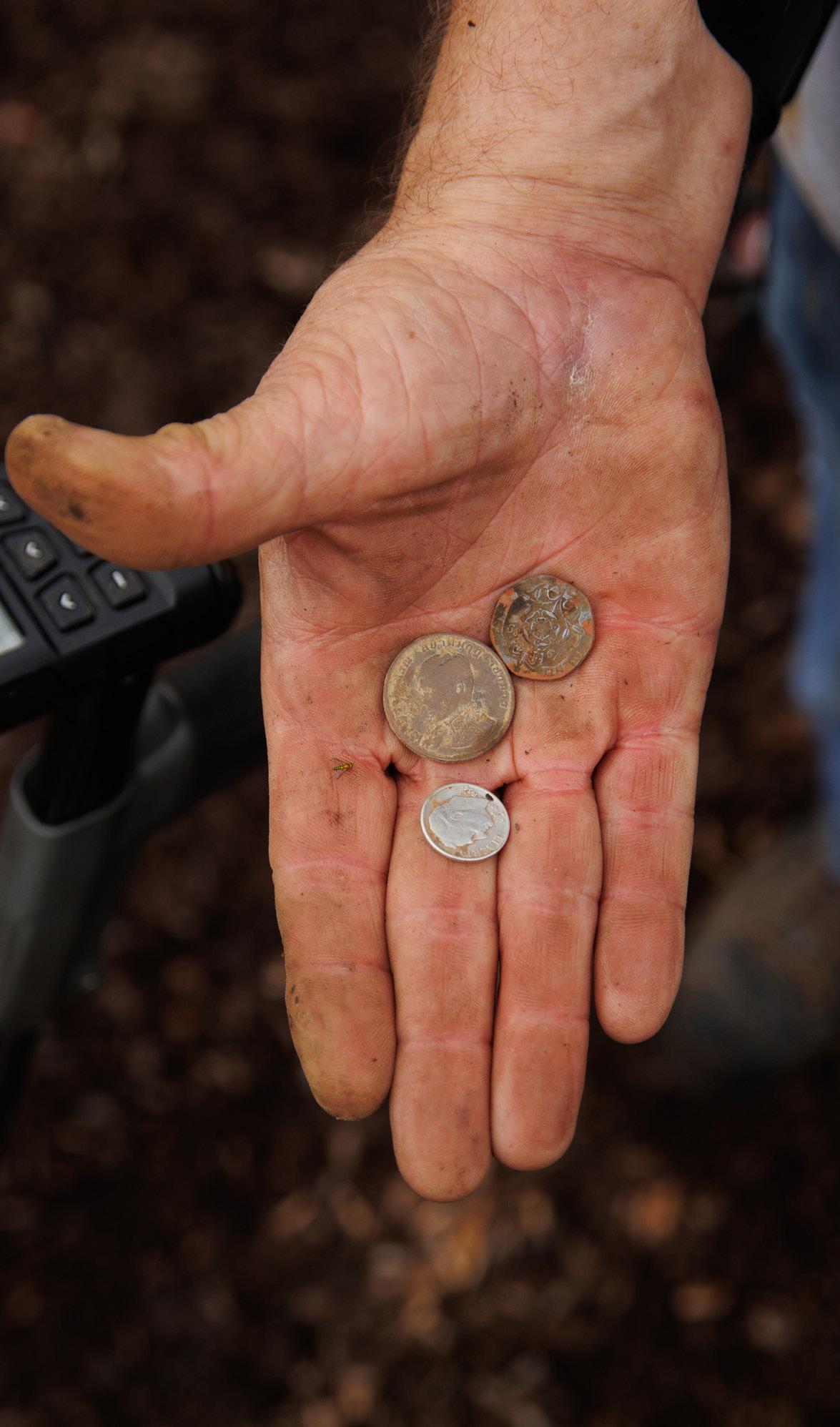
Motorcycles are in a lot more parking spots on campus now. With the hard parking situation, what can we do about this?
Dear Anonymous Reader,
Parking has been a problem on campus for a long time. The first step in fixing this issue is to bring it to light, which you have already accomplished by writing to the Accent.
While it may seem like a daunting task, there is still more you can do! The Student Association (SA) Senate was designed to be an advocate for the student body. You should be getting biweekly emails from your senator, so you already have a way to contact them.
Another way to speak to a senator is to attend their biweekly meetings in Bietz. They can take your opinion and express it to SA and Southern’s administration about the increasing issue of parking on campus.
Making changes on campus can be tough, however, there is always something that can be done! The more people talk about a problem, the more people are moved to make a difference.
- The Southern Accent
Are questions keeping you up at night? Too scared to go to vespers because you don’t have the guts to ask out your crush? Is the CIA stalking you?
Scan the QR code to let us know!

In the Oct. 1 article, titled “The Katie Lamb Public Library Reopens,” The Accent mistakenly wrote “he said” instead of “she said” after Bailey Thrasher's final quote.
Editor's Note: The Southern Accent has produced a Collegedale News section this issue as part of a national initiative to enhance community news coverage. The local effort, led by Southern's School of Journalism and Communication in conjunction with the Center for Community News (CCN) at the University of Vermont, places student journalists at the forefront of addressing the news desert crisis, a phenomenon caused by the decline of newspapers in local communities. The Accent believes local news is vital to a thriving democracy, and we remain committed to reporting about important issues, novel occurrences and interesting people in the greater Collegedale area. We will publish this special section in five issues of the newspaper this semester. To submit tips or press releases, go to https://southern-accent.org.
After its completion in late June, the Apison Pike bridge was officially dedicated by the City of Collegedale on Oct. 1 as the Desmond T. Doss Medal of Honor Bridge.
The Desmond T. Doss Bridge is part of a larger 10year upgrade project on Apison Pike, with the Tennessee Department of Transportation (TDOT) promising improvements in traffic, safety and capacity.
The project, which comprised the construction of the bridge and the widening of Apison Pike up to Layton Lane, had an estimated cost of $97.5 million and a completion date of June 2025, according to a previous Accent article. The bridge has diverted a large flow of traffic that initially went through Old Apison Pike.
In an interview with the Accent, Zachary Bradley, a senior history major and resident of Spalding Cove, said the construction of the bridge and nearby infrastructure had been an inconvenience.
“I don’t mind the bridge, but I mind the construction,” he said.
Bradley explained his frustration with the dumping of boulders and other construction equipment happening as early as 7:30 a.m.
In an email to the Accent, Anne Bradley, TDOT regional communications officer, explained that the construction of the new bridge further completes TDOT’s plan for the expansion of Apison Pike.
“The bridge is a critical milestone within the broader Apison Pike reconstruction project,” she said.
With construction beginning in 2020, the bridge project has been ongoing for the past five years, causing major changes to the greenway and

Spalding Cove apartments at Southern.
Adam Bellis, a community member and alumnus of Southern, mentioned how the lengthy bridge construction project has caused traffic jams.
“[This] mammoth project seemed to have no end,” he said. “Spalding is just right under the bridge. They were being woken up and disrupted by construction. I had many friends that were over there. And I did feel like students don’t go to Southern to experience all of that.”
For some students and community members, the construction has changed the flow of traffic, as well as brought unwanted noise and congestion.
“It makes it a much busier road to use if you are a pedestrian,” said Bradley, “[but] I appreciate that it’s done.”
Alessandro Yoxom, sophomore media production major, explained his experience as a commuting student.
“The new Apison Pike bridge is a blessing to everyone residing in Collegedale and to the students of Southern,” said Yoxom. “However, as a commuter student, there are a few issues with the new installation of the bridge. When driving from Old Lee Highway, I have to wait for a while to merge due to oncoming traffic from both sides.”
Anne Bradley explained that the bridge construction
and Apison Pike upgrade will benefit Southern students and community members.
“Early observations indicate enhanced mobility and reduced congestion, especially during peak travel times,” she said.
The TDOT website states that the Apison Pike expansion, including the new bridge, addresses issues with congestion that were experienced on the original two-lane road.
“The Apison Pike project is intended to improve the safety and operation of the route by correcting roadway deficiencies,” according to the TDOT website.
Members of the community and students can expect
smoother-flowing traffic and a safer driving experience as the project comes to a close.
“Overall, the project strengthens the region’s transportation network with a safer and more reliable route that supports economic growth and quality of life for Tennesseans,” said Anne Bradley. “Activities are expected to wrap up in the coming weeks, marking substantial progress toward full project completion.”
The students and community members have recognized the plethora of changes that have come to the Collegedale and greater Chattanooga area in the past few years.
“It doesn't feel like little Apison anymore,” said Bradley.
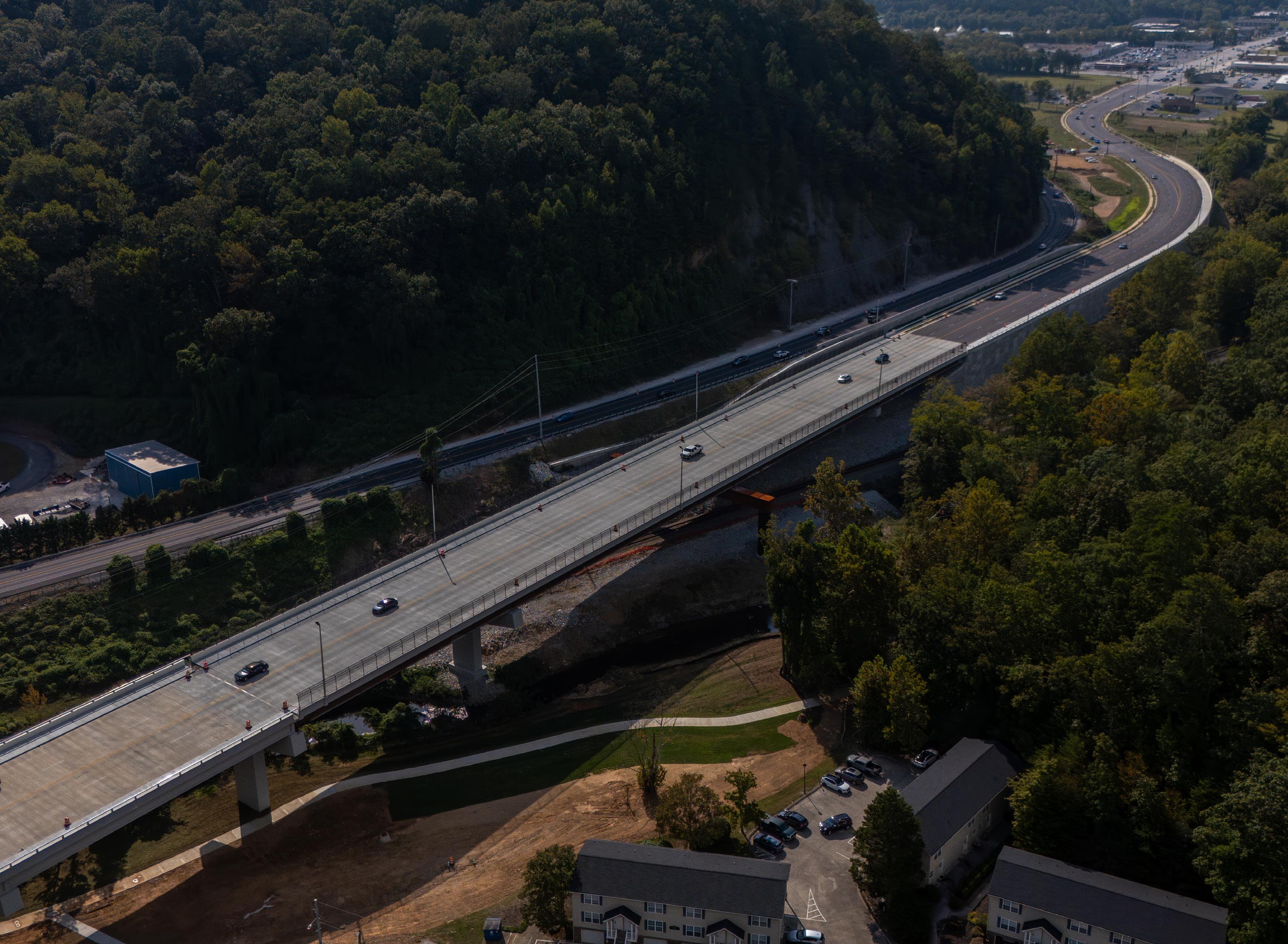

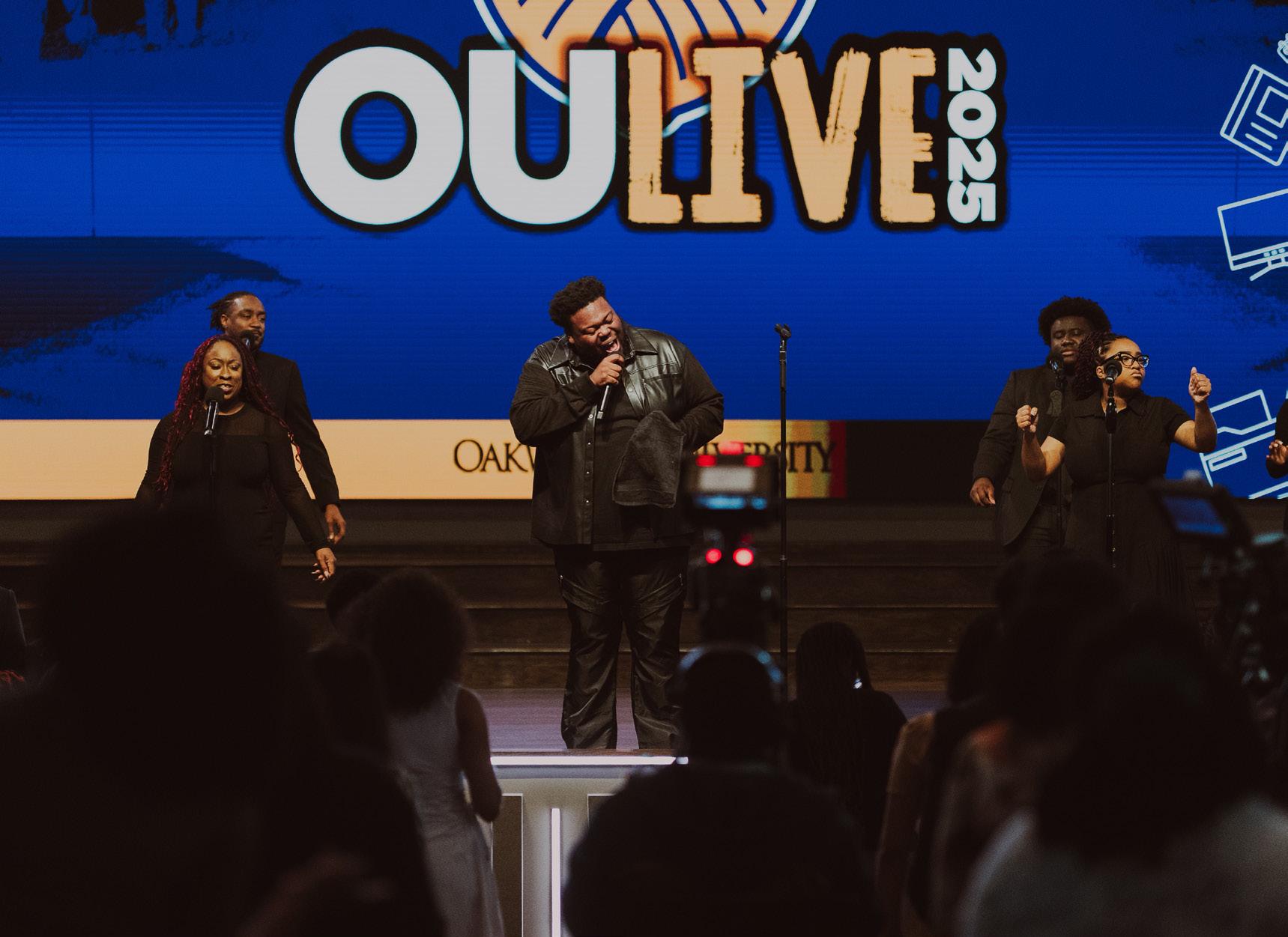
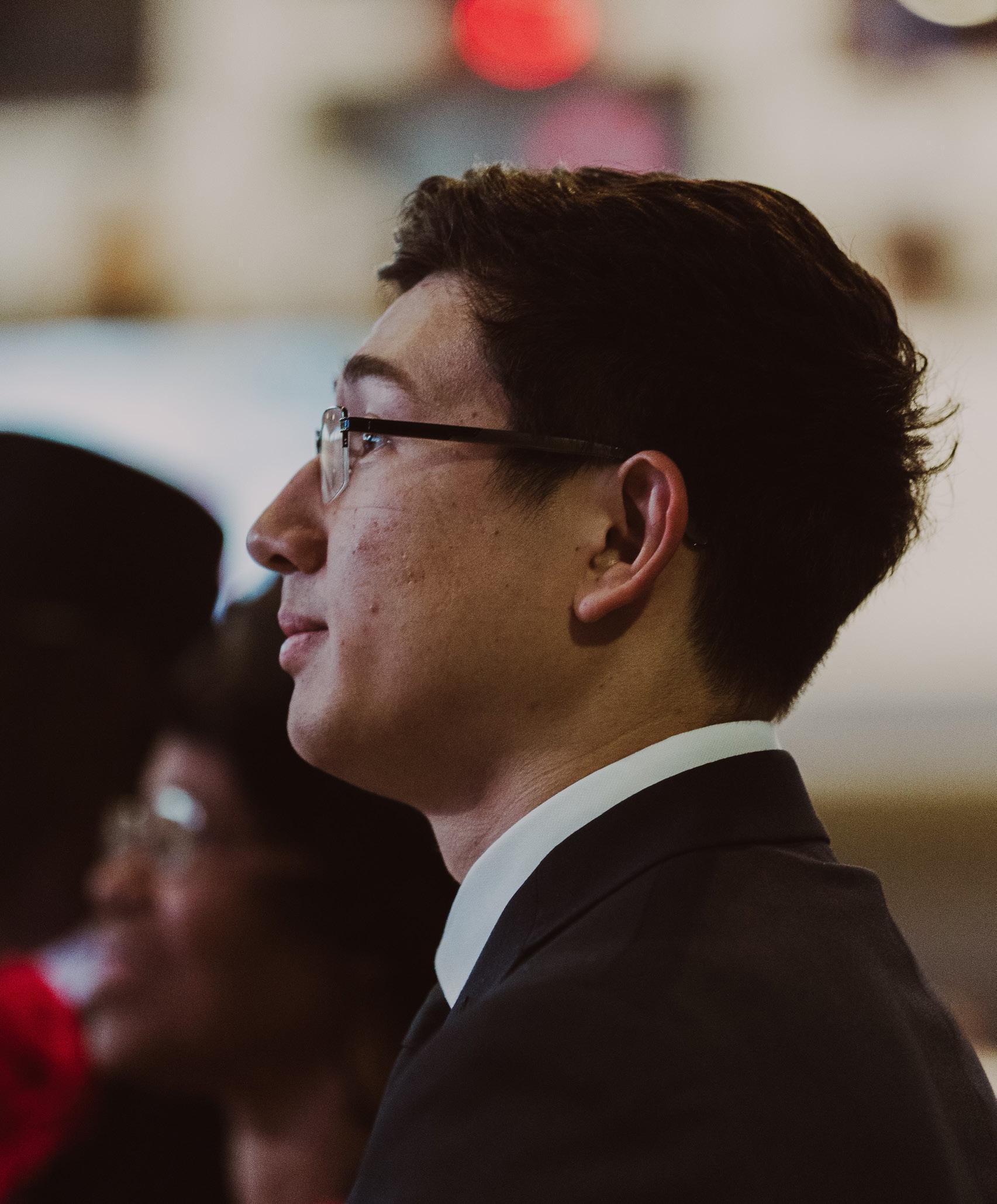
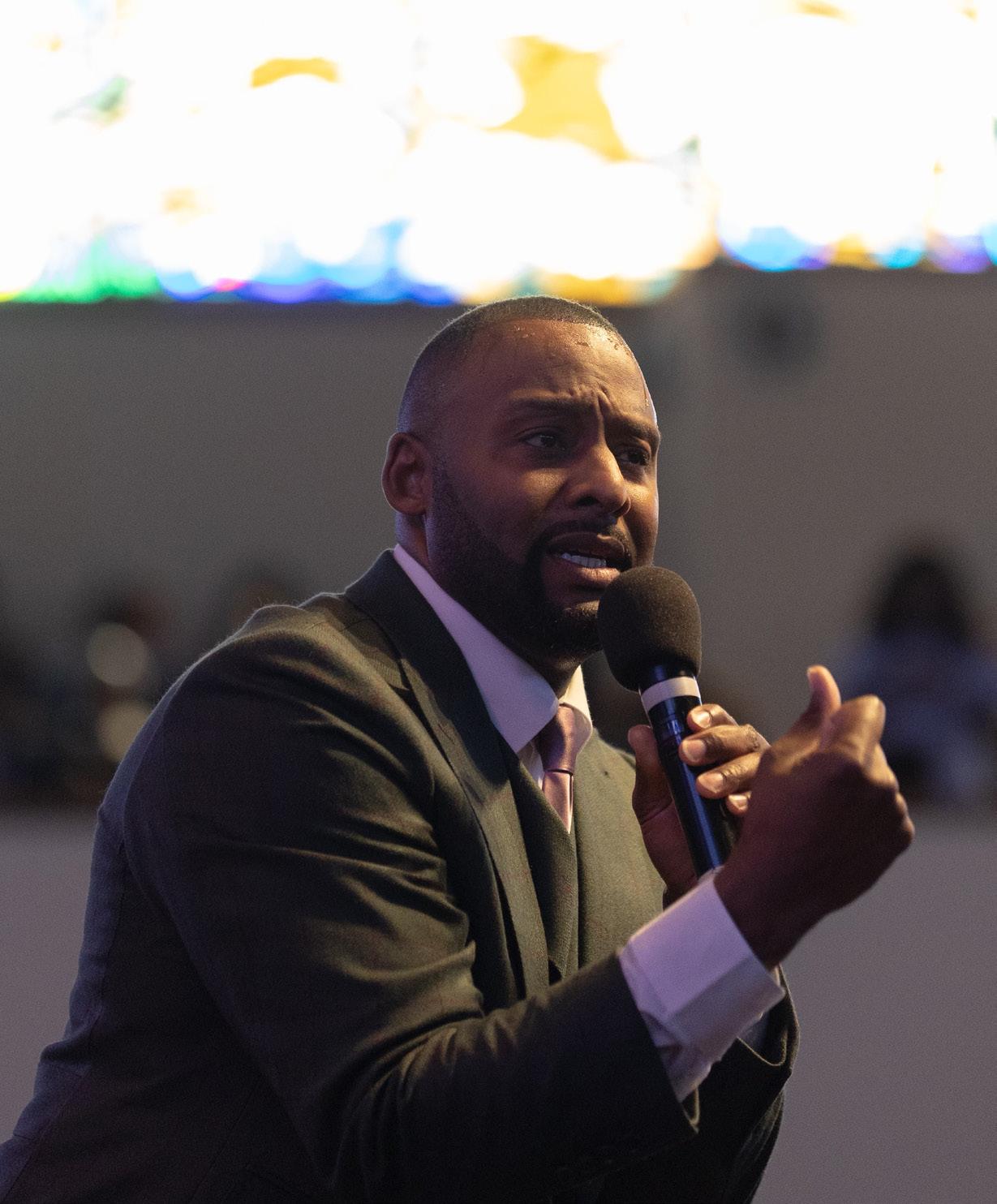
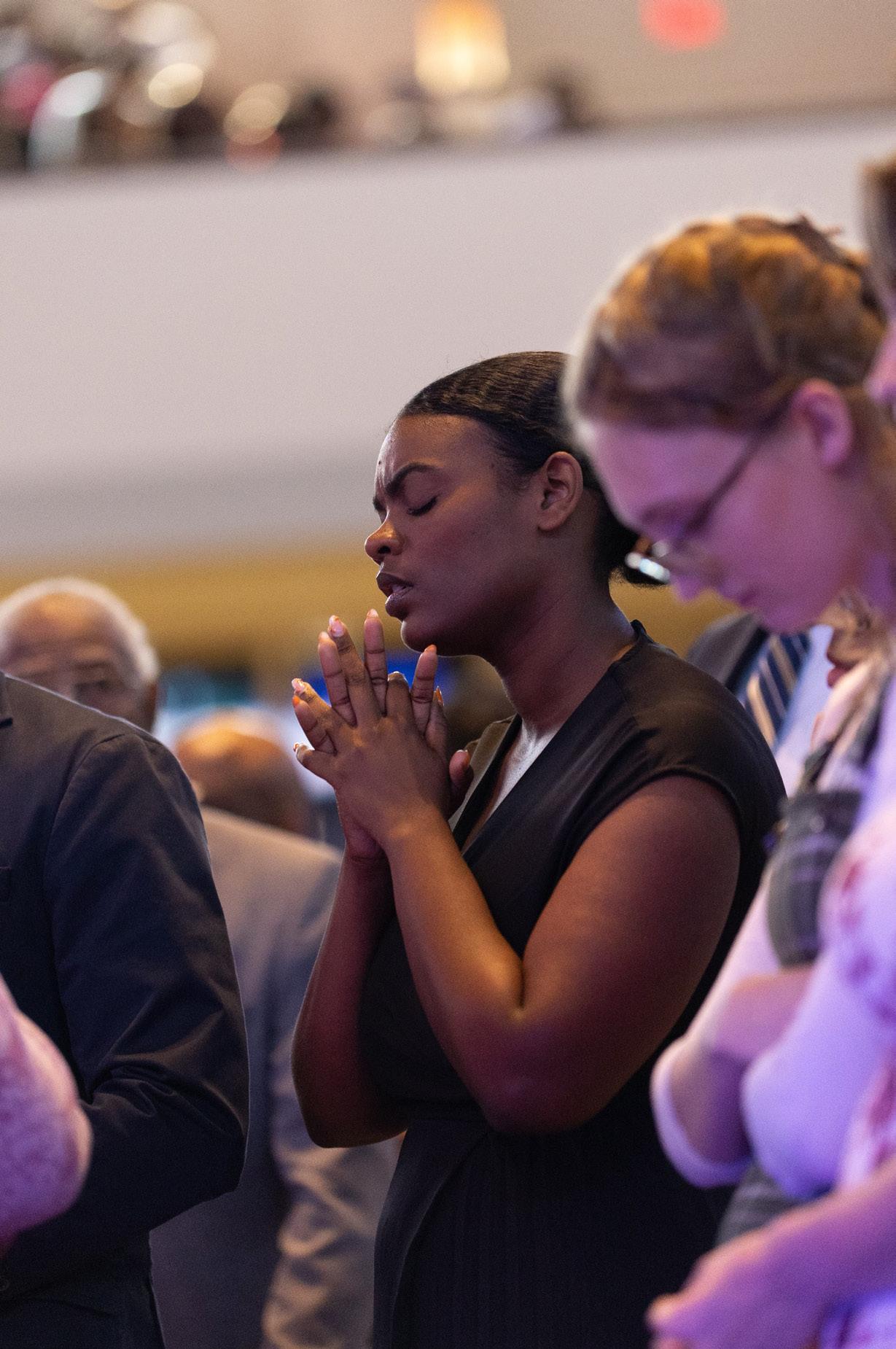
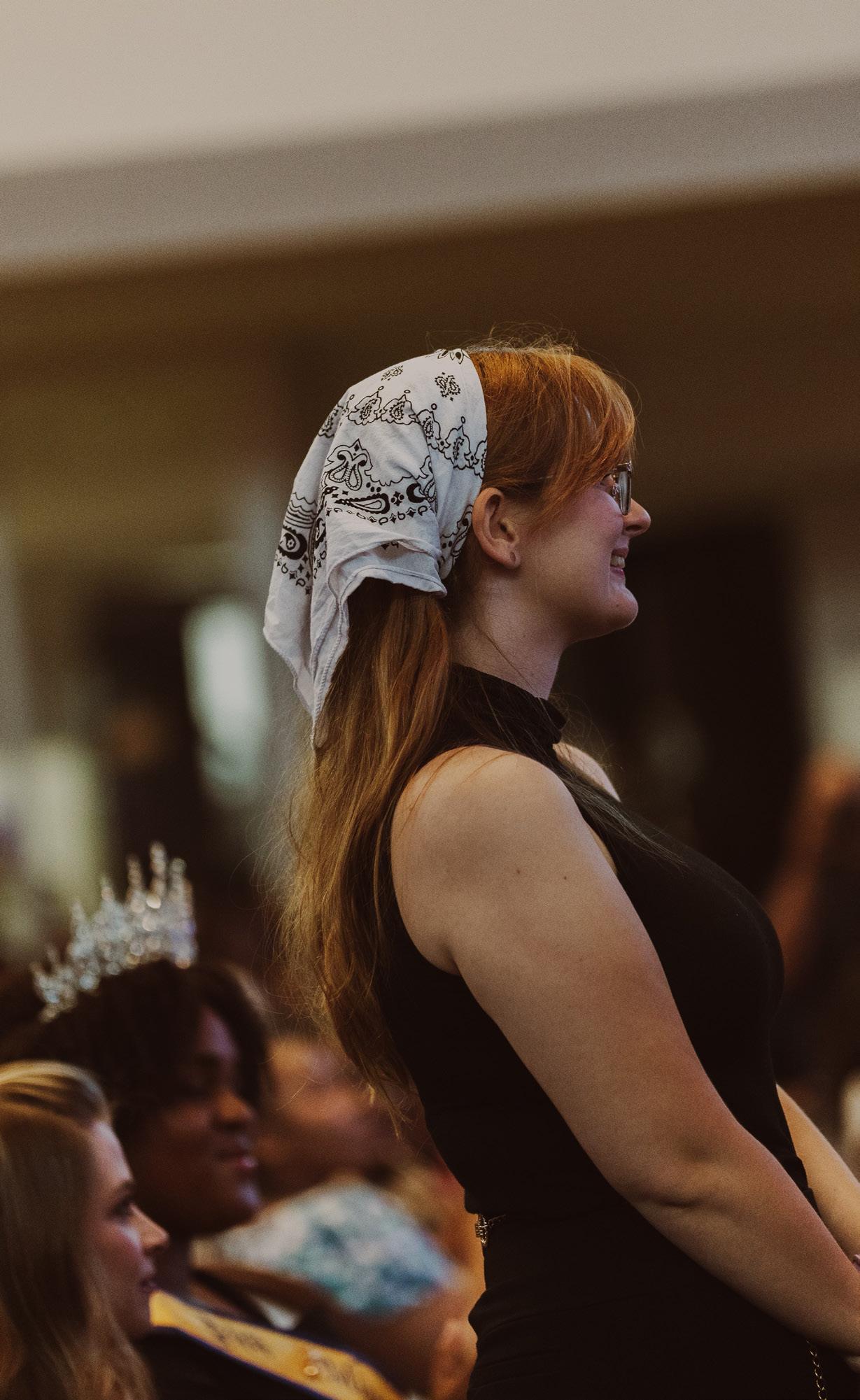
Abby Dizon Contributor
Processing a breakup can be hard, especially when it is unexpected. When you add managing schoolwork on top of that, it can seem almost impossible. Perhaps the hardest part is accepting that the breakup happened, and that life goes on, even if all you want to do is crawl into bed and stay there
indefinitely. This article provides tips that can help you stay on top of your studies amidst the turmoil happening in your heart.
First, and perhaps the most obvious, is to set healthy boundaries with your ex. Each person is different and maybe that means not texting them as much or avoiding places where you might run into them, at least while the breakup is still
fresh. A non-negotiable is to avoid constantly checking their social media or purposefully trying to bump into them. Doing this will potentially disrupt your peace of mind and cause you to feel mixed emotions. On one hand you might experience a sense of happiness seeing them, coupled with a glimmer of hope that there is potential for you both to get back together. On the other hand,
checking up on their social media platforms can lead to even more heartbreak if you discover that they have moved on. Maintaining your peace of mind is more important than keeping tabs on your ex’s activities.
The second tip is to prioritize taking care of yourself. Taking care of yourself is crucial when you are dealing with a breakup and trying to stay focused in

“Processing a breakup can be hard, especially when it is unexpected.”
school. Making sure you are eating well, getting enough sleep, spending time with your friends and engaging in activities that you enjoy are all ways to care for your mind and body. Exercise and spending time outdoors are scientifically proven to reduce stress and improve your mood. According to a 2021 study, outdoor nature-based activities are effective for improved mood, less anxiety and more positive emotions which led to improving mental health in adults, including those with pre-existing mental health problems. When you prioritize your physical and emotional well-being, you’ll be better equipped to handle the challenges that come your way.
The third and final tip is: do not hesitate to seek help. Southern Adventist University offers free counseling services for students going through difficult times. Talking to a professional can provide you with valuable coping strategies and emotional support as you navigate this challenging period. Remember, it is okay to ask for help when you need it, and taking care of your mental health is just as important as taking care of your academic responsibilities.
To make an appointment, you can call the Counseling Service at 423-236-2782 or walk into their office on the 3rd floor of Bietz Center for Student Life.
Matthew Taylor Sports Editor
Southern Adventist University’s Evangelistic Resource Center (ERC) hosted its annual futsal tournament last Saturday. The event drew eight student teams for a night of friendly competition, fellowship and mission awareness. The event, held in partnership with the School of Religion, served not only as an athletic gathering but also as a ministry opportunity, reflecting ERC’s mission to train, equip and inspire students to share Christ through service.
For Obed Gonzalez, a junior theology major who coordinated this year’s tournament, the goal extended beyond the scoreboard.
“The purpose for the event is for students to have fun, but at the same time, to introduce them to ERC,” Gonzalez said. “At halftime, we tell them, ‘Thank you for participating. We’re ERC Missions, and you have the opportunity to go and preach as a missionary in a different country.’”
RC Director Pastor Raul Rivero said that sports can be a bridge to spiritual engagement.
“We have three goals in mind when doing our sports events,” he said. “Create a safe space where our students can have fun, create awareness that ERC Missions exist and mingle with students, encouraging them to join us.”
The structure and organization were also better than in previous years. Gonzalez, who previously assisted with the ERC Olympics, said that the planning and communication for the event made an improvement compared to previous years. Rivero also noticed the difference.
“Every year we learn some-
thing new,” Rivero said. “This year’s event was better organized in terms of timing and structure. The feedback was overwhelmingly positive.”
Beyond athletic success, the ERC tournament became a symbol of community on campus. Teams such as Kick It, which claimed first place, and Inshallah, who took second, showcased spirited sportsmanship that reflected the event’s mission-centered heart.
“The ERC tournament pushed us all beyond our limits,” said Romany Mousa, captain of Inshallah. “Every game taught
something new about teamwork, faith and persistence. We didn’t just play to win. We played with purpose. This competition reminded us how sports can bring the Southern community together.” Endurance is a must in this competition.
ERC staff also used the event as a fundraising opportunity, selling food to help support students who can’t afford to participate in mission trips.
“It helped build awareness of our cause,” Gonzalez said. “We were able to remind people that fun and faith can work
hand in hand.”
For Gonzalez, the experience was not only a logistical success, but also a personal testimony.
“I was nervous; it was my first time doing something like this,” he admitted. “But I prayed for it, and it ended up going really well. I learned that it doesn’t matter how hard it is, God gives us the ability to do hard things.
If anyone feels unsure or nervous about leading something for the first time, just do it. God is with us.”
As the ERC continues to blend recreation and outreach,
plans are already in motion for the next major event: the ERC Olympics, scheduled for March 7. This multi-sport night will combine futsal, volleyball and basketball, with the same mission-focused spirit that made the futsal tournament a success.
“We’d like to see even more people joining us,” Rivero said. “Southern has so many great events, but we hope to keep growing both of our sports ministries. When students have fun and connect with our mission, that’s when true ministry happens.”

Samuel Guerra Opinion Editor
This article is a continuation of a topic addressed in last week’s issue. I encourage you to read that earlier piece, in which I presented arguments backed by recent data defending nuclear energy as one of the cleanest, safest, and most reliable sources of energy available today. Since the Industrial Revolution, energy has been synonymous with power. Economies require energy to industrialize and develop; without sufficient power, a country cannot grow. Global energy consumption continues to rise, making it imperative to identify sources that do not excessively pollute.
The emergence of generative artificial intelligence (AI) has dramatically increased power demand. Data centers supporting these systems consume enormous amounts of electricity, not only to run computing operations 24/7 for data processing and model training, but also to store vast quantities of data. Additionally, these systems generate significant heat, requiring even more power for cooling.
The scale of this consumption may surprise you. On September 24, Fortune reported that, according to current projections, OpenAI—the company behind ChatGPT—will, with its “next wave of AI data centers,” consume as much electricity as New York City and San Diego during peak hours combined.
These unbelievable energy demands are often used to generate what some call “flop”: AI-generated images or videos that are nonsensical or unusable.
While those figures are projections, the present reality is already striking. Today, data centers account for 33% of all electricity used in Oregon and 37% in Virginia, according to data from DC Byte and the U.S. Energy Information Administration.
This rapid surge in energy consumption comes at a cost. Residents in multiple states across the country report significantly higher electricity bills despite unchanged or even reduced personal usage. A recent analysis of DC Byte’s latest data, published last month, found that in areas near major data center activity, monthly electricity costs have risen by as much as 267% compared to five years ago.
According to an independent market monitor for PJM Interconnection—the world’s largest energy market, covering 13 U.S. states from Illinois to Washington, D.C.—data centers were responsible for an estimated $9.3 billion in additional costs passed on to ratepayers. Residents in Maryland, New Jersey and other Northeastern states are increasingly vocal about their frustration. They feel they are being forced to subsidize the soaring energy demands of AI data centers through inflated utility bills.
Globally, data centers are projected to consume more than 4% of the world’s electricity by 2035, according to BloombergNEF. To put that in perspective: if data centers were a country, they would rank fourth in electricity consumption—behind only China, the United States and India. But if we bring the issue closer to home, we can see
it’s already affecting residents in Tennessee. In Memphis, a data center opened last year by Elon Musk’s xAI couldn’t secure enough grid electricity, so it now operates 33 methane-powered gas turbines to generate the power it needs. The magnitude of the energy demand—and resulting pollution—at the facility, called Colossus, is indeed colossal. According to the Southern Environmental Law Center, the site draws enough electricity to power approximately 100,000
homes.
Researchers at the University of Tennessee, Knoxville, analyzed air quality in South Memphis and found that peak nitrogen dioxide concentration levels have increased by 79% compared to pre–xAI data center levels in areas immediately surrounding the facility.
The facility’s massive methane gas turbines are increasing smog in Memphis by 30% to 60%. This is a problem already affecting residents of this state—and one that could hap-
pen to any community next. As the data show, energy demand is skyrocketing due to AI’s voracious power consumption, and this trend shows no sign of slowing. One could argue for curbing this surge in AI demand—and I support such efforts. But the central point of this article is this: if we are going to consume this much energy, we might as well draw it from a clean, safe and reliable source such as nuclear energy.

Allison Grundy Copy Editor
A few years ago, I searched a bookstore for the poetry book I had heard so much about: Devotions by Mary Oliver, a collection from the award-winning poet. At the time, I didn’t know much about Oliver or her work, but I just had a feeling these poems would be worth reading.
Finally, I found a second-hand copy.
I didn’t know what to expect from the collection, and I was surprised to find that a book so rooted in faith could resonate so widely in secular book reviews.
Some may be familiar with her most famous quote, “what is it you plan to do, with your one wild and precious life.”
Oliver writes her poems with an earnest simplicity, and not a single poem has ever left me feeling uncertain. The poet is repeatedly combining spiritual life with what’s tangible: prayer with an encounter in nature, praises with a bird flying by, worship with snakes slithering through the grass and introspection with watching her dogs run in the woods.
“To pay attention, this is our endless and proper work,” she writes in her poem “Yes! No!”
Unlike some poets who pose unanswered questions, Oliver gives moral direction in her work, saying we need to love, be watchful or be quiet.
“Why wonder about the loaves and the fishes? If you say the right words, the wine expands... Accept, too, each spoken word spoken with love,” writes Oliver in “Logos.”
So simple, yet there’s so much thought-provoking material you could pull from this writing. As I’ve grown, I’ve realized that not all meaningful
things have to be complicated.
Words don’t have to be dissected and torn apart to be worthwhile literature.
Simplicity is found throughout Many times, in the Bible, when Jesus talks to His father, he utters simple prayers.
“Not as I will, but as you will,” in Matthew 26:38 and “Father, forgive them, for they know not what they do,” in Luke 23:34.
Even “Jesus wept” in John 11:35, Jesus shows how weeping, perhaps even silence, can be a prayer of its own.
Oliver’s emphasis on the ordinary is what makes her work special; she reveals a perspective of seeing beauty in everyday life and encourages her readers to notice the same. This passage from her poem
“Storage” captures these ideas well:
“Make more room in your heart for love, for the trees! For the birds who own nothing— the reason they can fly.”
Oliver never got a degree, never married and she never talked about a specific Christian denomination or doctrine that she followed. However, her work is rich in biblical allusions and an emphasis on prayer.
In Devotions, it seems that for every three poems that are about finding a new way to be awe-struck by nature, there’s one about faith. I think the way her faith is hidden in plain sight is what has kept Oliver so popular in the literary world, yet she’s not always necessarily referred to as a Christian writer,
but this has proven to be a valuable ministry bringing new ideas of thinking about ways of finding faith in our life to those who may not have been searching for that.
In her poem “the gift” she puts things plainly, “Love still as once you loved, deeply and without patience. Let God and the world know you are grateful. The gift has been given.”
She especially writes about how grateful she feels for all she has, and for what she sees in nature.
“Sometimes I need only to stand wherever I am to be blessed,” Oliver wrote in “It was early.” This sentiment resonates with me because actively pursuing some form of gratitude
has become an important part of my life: taking account of all that I have. This is true for Mary Oliver in her poetry about creation, and for all of us, wherever we can find it. I recommend her work; she has over 20 volumes of poetry published. Devotions is an especially beautiful collection. Felicity has more poems about love. Dog Songs is wonderful for any pet lovers. American Primitive is an award-winning collection from Oliver’s earlier years.
In a world that often feels rushed and complicated, Oliver reminds us that holiness can be found in the ordinary. Her poetry invites readers to pay attention, be grateful and recognize the sacredness all around.

Rhett Seitz Lifestyle Editor
In today’s fast-paced world, demands come from every direction: school, work, family, friends, health and, of course, sleep – the thing we never seem to get enough of – The question looms: How do we balance it all? Something has to give.
The key lies in one word with extraordinary power. Some call it the most powerful word in the world, with the potential to change your life entirely. That word is “no.”
For me, saying “no” was once excruciating. I’m a people pleaser. When a friend texted, “Wanna hang out?” I wanted to jump at the opportunity. But more often than not, I had to decline. Each time, guilt followed me like a shadow; . I felt I was letting friends down. But in reality, I was dismissing my own needs.
I was burning out, slipping behind in my commitments and neglecting both my mental and physical health.
Here’s the truth: People pleasing hurts you more than it helps others. When you say “yes” to everything, you say “no” to yourself. Over time, that pattern takes a toll. But as I learned, saying “no” gets easier with practice. I began to take on fewer commitments, guard my time and focus on what truly matters. Even now, I sometimes wince when I turn someone down. But I’ve learned that life is too short to say “yes” to everything.
The cost of never saying “no”
If you’re not convinced yet, the data may sway you. Chronic stress from overcommitment carries serious consequences. The American Psychological Association warns that persistent stress can contribute to sleep disturbances, anxiety and depression, according to its Stress in America report. Research supports that claim. A 2024 study published by the National Institutes of Health found that health care workers with high levels of “overcommitment” showed significantly higher allostatic load: the cumulative wear and tear on the body caused by chronic stress. In other words, continually saying “yes” to everything isn’t admirable. It’s dangerous. You’re not being dramatic when you feel overwhelmed. You’re responding to a real physiological and psychological burden. That’s why learning to say “no” isn’t just helpful, but essential.
How to say “no” without feeling terrible
Here are strategies I’ve adopted that may help others:
• Pause before answering. When someone asks something of you, resist the urge to respond immediately. Give yourself permission to think it through. A simple, “Let me check my schedule,” buys time.
• Offer an alternative. If you can’t commit fully, propose a smaller role. Maybe say, “I can’t help with the whole project, but I can assist with this section.”
• Know your priorities.
Every “yes” inherently means saying “no” to something else — your rest, time, focus or health. Decide ahead of time what matters most to you.
Be clear and concise. A respectful, “I’m sorry, I can’t,” is often stronger than long explanations or apologies.
Practice boundary language. Phrases like, “I’d love to help another time,” or, “That doesn’t work for me right now,” keep relationships intact while maintaining limits. Remember the benefit. Saying “no” frees your time, energy and mental space for what matters most.
Saying “no” isn’t unbiblical
Some believe that “no” conflicts with humility or Christian service. But Scripture shows that even Jesus declined demands to fulfill His higher calling.
In Matthew 12:46–50, when His family sought to interrupt His ministry, He held firm to His mission. He said “no” to temptations in the wilderness, resisting Satan and affirming God’s will. At other times, He withdrew from the crowds to pray alone.
Jesus didn’t say “yes” to every request. He prioritized. He set boundaries. His example shows that refusal isn’t rejection; sometimes it is wisdom, discipline and clarity.
In Matthew 5:37, He taught, “Let your yes be yes, and your
no, no.” The simplicity of those words underscores integrity. When “no” feels hard, it isn’t because it’s wrong to say. It’s because we rarely practice it.
The freedom in saying “no” “No” is not a negative word. It is a powerful word. It allows you to protect your time, health and purpose. It demonstrates honesty with yourself and with others.
Life isn’t about how many things you agree to. It’s about saying “yes” to what matters, and “no” to what doesn’t. Every “yes” should carry weight. Every “no” should bring peace.

Across
2. The toasted part of the rice, very popular in Dominican Republic.
3. Fried plantain chips.
5. Argentinian cookie typically made out of cornstarch cookies and dulce de leche filling.
7. Mexican drink made out of bitter fermented corn dough and cacao.
8. Famous Colombian street food, usually made out of corn flour and cheese.
Down
1. Puertorican dish, made with mashed plantain, broth and garlic.
4. Chilean deep fried dough dessert, served with a sprinkle of honey and cinnamon sugar.
6. Spanish name of passion fruit.
Created by Ander Aviles


Notes of Kindness/National Depression Screening Day @ Bietz Center 11:00 am Convocation: Meet the Firms @ Iles P.E. Center


• 6:30 pm Anna Bennett @ Collegedale Church of Seventh-day Adventists
7:12 pm Sunset
7:30 pm AfterGlow @ Collegedale Church of Seventh-day Adventists
8:30 pm Vespers: Anna Bennett @ Collegedale Church of Seventh-day Adventists
• 11:45 am Merge Worship @ Collegedale Academy Elementary Gym

• 11:45 am Renewal @ Collegedale Church of Seventh-day Adventists
• 7:00 pm Evensong: School of Music Choirs @ Collegedale Church of Seventh-day Adventists
• 9:00 pm - 11:00 pm Latin American Cultral Night @ Iles P.E. Center

• Floor Hockey Team Signup Begins
• 7:30 pm Concert: Southern Wind Symphony @ Collegedale Church of Seventh-day Adventists

Nothing scheduled
• Senior Photos @ Bietz Center

Futsal
6:00 pm
- Beans and Rice vs All Stars (Men’s B)
- Espaldas Grandes vs Sal Survivors (Co-Ed)
7:00 pm
- Chopped FC vs Kim Jung Un Children (Men’s B)
- Shalom Yahweh FC vs Perfectly Aged (Men’s B)
8:00 pm
- Team vs Crudinhos FC (Men’s A)
- Mo Salah vs No Harm, No Foul (Men’s B)
9:00 pm
- No Manches United vs Nutmeg Nation (Co-Ed) - Goal Diggers vs Cooked (Co-Ed) Flag Football
6:00 pm
- First Downers vs bibim ballers (Men’s B)
- HUDDLE HONEYS vs Red Flags (Ladies’ B)
- Broncas vs flagmingos (Ladies’ B)
7:00 pm
- Chino Hills vs Young Bold Gifted (Men’s B)
- always open vs Hot Chubb Time Machine (Men’s B)
- Tacklin’ Fuel vs Old School (Men’s B)
8:00 pm
- Mossed vs Chiefs (Men’s B)
- Shalom Yahweh vs Sack Attack (Men’s B)
- Old School vs Hot Chubb Time Machines (Men’s B)
9:00 pm
- 67 vs Chain Movers (Men’s A)
- 2 hand touchers vs clankers (Men’s B)
- Tteokbokki Touchdown vs HUDDLE HONEYS (Ladies’ B)
1. Mofongo 2.Concon 3.Tostones 4.Sopaipilla 5.Alfajor 6.Maracuya 7.Pozol 8.Pupusas





